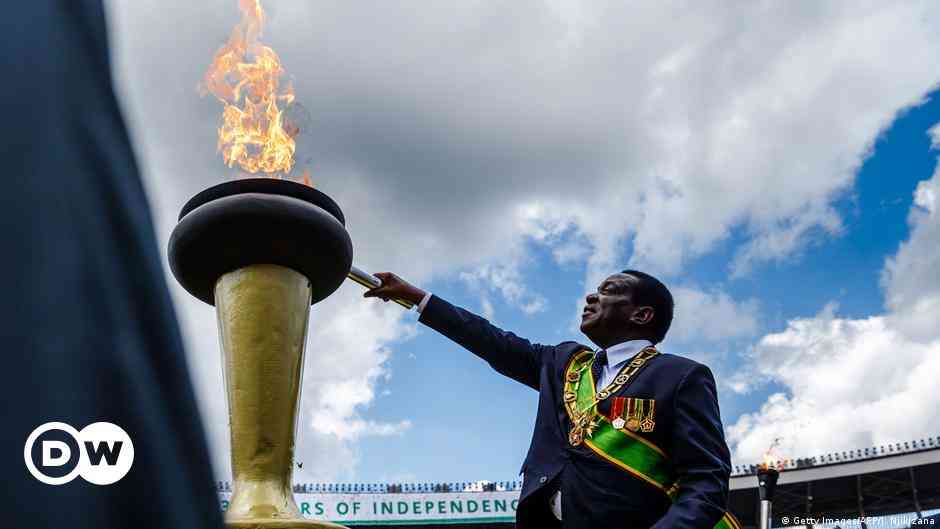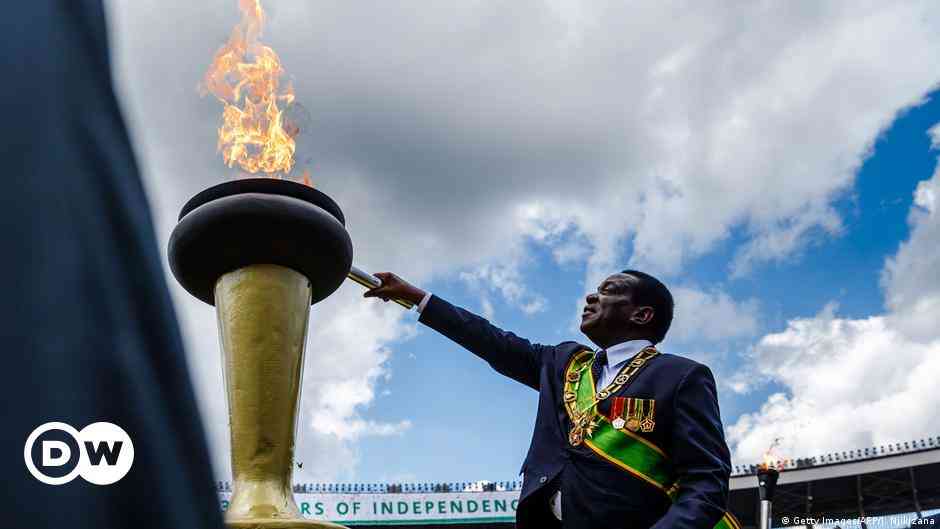
TWENTY-THREE-YEAR-OLD Gladys Marima has albinism and skin cancer.
In December, she had to leave her home in Harare when her family kicked her out. Her cancer, which is linked to her albinism, had caused a deep, septic wound on her cheek that had become infected with maggots and, she says, her family could not tolerate the stench.
Now she is staying with relatives in Chipinge, 400km from Harare. But she is unable to receive treatment because the two public hospitals which offer chemotherapy and radiotherapy treatment in Zimbabwe — Parirenyatwa Group of Hospitals in Harare and Mpilo Central Hospital in Bulawayo — were forced to close these departments in January after being overwhelmed with COVID-19 patients.
Marima, who had not sought medical attention for the wound on her cheek before the hospitals closed their cancer units, has received some support from Noble Hands Zimbabwe, a charity organisation which helps people with albinism, after it heard of her plight on social media.
Marvellous Tshuma, deputy director of Noble Hands, says: “We went [with her] to Parirenyatwa hospital but the cancer department was closed and they were not attending to cancer patients.” All they could get from the hospital, she adds, was some pain medication, food handouts and sun cream to protect Gladys’s skin.
The closure of these hospital units because of the pandemic comes as a major blow to cancer sufferers throughout the country.
Each year in Zimbabwe, 5 000 new cancer cases are diagnosed and more than 1 500 deaths are recorded. “Cancer is set to overtake HIV and Aids as the leading cause of death in Zimbabwe. The disease is often diagnosed late and with very few oncologists in public hospitals, most cancer patients lose their lives prematurely,” a 2019 report tabled by the cancer committee in Zimbabwe’s Parliament revealed.
Resources for cancer patients were already thin before the pandemic, with fewer than 300 radiographers registered to practise in Zimbabwe in 2019. Parirenyatwa Hospital received 7 000 cancer patients in 2018, and 2 000 died. These are all people who would not be able to receive treatment at all during the COVID-19 pandemic.
- Chamisa under fire over US$120K donation
- Mavhunga puts DeMbare into Chibuku quarterfinals
- Pension funds bet on Cabora Bassa oilfields
- Councils defy govt fire tender directive
Keep Reading
A 2020 study by the World Health Organisation (WHO) found Zimbabwe recorded 32,1% premature cancer deaths in 2016, compared with 23,3% in South Africa. This death rate is expected to surge.
“Cancer patients mostly in the albinism community are emanating from the rural areas and most they don’t have accommodation and in some cases, families do not want to support their relatives with albinism who are sick,” Tshuma explains.
While private hospitals are still operating cancer services, spaces in them are limited and most people cannot afford the US$1 000 to US$2 000 average cost for a course of chemotherapy, as well as extras such as US$650 to be admitted to hospital and US$500 for specialist tests.
Had she been wealthy, in the past Marima might have had the option of travelling overseas to seek treatment as a medical tourist — perhaps to South Africa where it costs about US$1 000 for chemotherapy treatment. But today even rich Zimbabweans are finding these avenues closed because of the pandemic. They, too, are now being forced to confront the reality of a public healthcare system that has been underfunded for decades.
It is not only cancer patients who are being turned away.
Chitungwiza Central Hospital has gone through phases of turning away what it terms “non-critical” cases when it has been overrun with COVID-19 patients.
Former President Robert Mugabe regularly travelled abroad for medical care. When he died from cancer in 2019, it was at the Gleneagles Hospital in Singapore. The 258-bed Singaporean hospital boasts a range of medical and surgical specialities and has been accredited by the Joint Commission International, which measures best practice for quality and patient safety, a pipe dream for most Zimbabwean patients.
An estimated 20 000 Zimbabwean citizens have spent US$4 billion on medical tourism over the past decade — mostly in India. This translates to US$400 million each year, or US$20 000 per person.
“We are losing millions each year through these referrals,” said Finance minister Mthuli Ncube, highlighting these figures during his mid-term budget review in 2019.
Vice-President and Health minister Constantino Chiwenga responded by promising to ban health tourism, saying it was “bleeding forex reserves”, and instead to improve health facilities in Zimbabwe.
“We will not export our patients. We will not make referrals to our patients. It is everybody, [including] ministers. Those who have been going out, it is you and me. Is it not? Altogether that export bill was too high and that is what we want to do away with,” he said on his appointment to the post in September 2020.
He added: “We will have hospitals that will specialise in different treatment services across the country. We are restructuring from the village health worker right up to the top hospital.”
However, no law against health tourism has as yet been passed and the healthcare system remains dilapidated. Furthermore, the minister himself allegedly skipped the country for treatment in December last year.
While each medical tourist leaving the country to seek treatment overseas spends on average US$20 000 each year, Zimbabwe’s own spending on healthcare was just US$21 per citizen in 2020 (nearly 1 000 times lower) — showing the stark inequality in healthcare between rich and poor.
Healthcare spending in Zimbabwe has historically been poor compared with other countries in the region, according to a 2013 report on the state of health financing in the African region conducted by the WHO.
A minimum spending level of US$44 per capita was recommended by the High-Level Task Force on Innovative International Financing for Health Systems in 2009. The WHO overall recommends a spending level of US$86 per person — more than four times what Zimbabwe allocates.
The WHO report also noted that rural health centres are particularly at risk in the country. These were allocated US$16 million in 2012, just 5% of the total health budget, despite the fact that 70% of people live in rural areas.
The country had 214 hospitals, of which 120 are government hospitals, 66 mission run and 32 are privately owned. There were six central government hospitals and 63 district hospitals, with the balance being rural hospitals, according to a 2015 tally.
“There is a need to boost government spending on rural health centres to avoid dependence on donor financing to be able to better cater for over 70% of Zimbabwe’s population that lives in the rural areas,” said the 2020 health budget brief from Unicef.
The COVID-19 pandemic has only piled more pressure on Zimbabwe’s crumbling healthcare system.
The influx of patients to public hospitals caused by the pandemic in the second wave which began in December had not been anticipated. Death figures have risen during this wave; the highest number of deaths in a day was 70, recorded on January 25.
As of mid-April, cumulative COVID-19 case figures for the pandemic were 37 859, with 1 553 deaths, within a population of 15 million.
“Some of these fatalities would have been avoided if we had a functioning healthcare system, hospitals, doctors, nurses, drugs and equipment,” says Tendai Biti, an opposition politician for the MDC Alliance party.
“We don’t have all the basics,the system is a shell. That’s why people are dying like this. We could have partly avoided this situation. Inadequate stocks of basic medicines and corruption have caused more suffering to users of public hospitals.”
“President Emmerson Mnangagwa, his ministers and their cronies are marooned locally, they can’t go to South Africa, Singapore and China, but they have destroyed hospitals, [and are] now facing the consequences,” says Biti.
“They should have invested in health, but they didn’t, hence people are dying.”
In 2011, Zimbabwe had 2,6 doctors for every 10 000 patients. By contrast, for every 10 000 people in South Africa, there were 40,7 doctors in 2018.
This has translated into an inefficient response to the coronavirus pandemic in Zimbabwe.
“I am not satisfied with the way the coronavirus has been handled because our testing levels have been low, hospitals are not equipped to manage COVID-19 patients and people are unable to get proper and advanced medical treatment,” says Mthabisi Bhebhe, a government medical officer at Plumtree District Hospital.
Plumtree town is at the southwestern tip of Zimbabwe, near the Botswana border, 110km from Bulawayo. The hospital caters for poor, rural people in Matabeleland South province. The decaying healthcare facilities are similar to most hospitals in Zimbabwe.
“The current health system in Zimbabwe is in crisis. COVID-19 has made obvious all the shortfall in the system, poor funding, corruption, shortage of health workers and lack of adequate vital medicines, poor referral system and dilapidated health infrastructure,” says Bhebhe.
“The current situation is that cases [of COVID-19] continue to increase, isolation centres are full, health workers have no adequate personal protective equipment (PPE) and are poorly paid. SARS-COV2 testing capacity is unacceptably low and people are scrambling for hospital beds and oxygen. The ordinary man in Zimbabwe is generally unable to enjoy their constitutional right to access healthcare.”
Business unusual
At a church-run mission hospital in Chiredzi town, in southeast Zimbabwe, one nurse who asked not to give her name shared her experience.
“I started caring for coronavirus patients from January 2021 with 25 positive patients in the isolation ward. At first, I was scared and lacked in confidence. Though I had undergone training on COVID-19, still I felt I could not manage the task,” she explained.
In her line of work, she says, there is no such thing as a “normal day”. “At one moment the patient is stable and the next, I need to ventilate the patient. Out of 25 positive patients, only one died and 19 have recovered. I am happy for the recoveries and a bit disappointed by the death.”
Though they have enough PPE, she says she is frightened by the lack of medical equipment. “We have only two ventilators which are small and not enough for the patients. The scariest thing is going into the ward and administering medication to the sick patients.”
In public hospitals, employees are demoralised, says a nurse at Chitungwiza Hospital, who did not wish to be identified. “There is a shortage of medication for disease like diabetes and BP (hypertension) and most elderly patients are skipping their medication, running the risk of losing their lives because they cannot afford to buy medication from private pharmacies.
“Our hospital equipment is sometimes broken and overwhelmed by patients and we have to refer patients to other bigger hospitals in Harare or private hospitals with better equipment.”
An empty manifesto
In the 2018 election campaign, — Mnangagwa’s Zanu PF manifesto pledged to “ensure that treasury allocates at least 15% of the national budget to healthcare sector”. It further proposed to review medical professionals’ remuneration, and to rehabilitate and invest in new healthcare facilities. Most of these promises remain on paper, however.
The 2021 national budget committed US$683 million towards health — 12,9% of the country’s overall budget.
The State denies that there is a health crisis in the country or that the nation’s hospitals are overwhelmed. “Let me reassure citizens that Zimbabwe’s public and private health institutions still have adequate capacity to offer health services to all patients,” Chiwenga was quoted as saying in the media.
However, the Finance minister painted a gloomier picture for public healthcare during the national budget presentation in November.
“The COVID-19 pandemic has put a spotlight on the challenges in the healthcare system and infrastructure, from shortages of testing and medical supplies to access to health services for underserved populations,” he said.
“The health crisis provides useful lessons for longer-term reforms required to build greater resilience in our health systems against any future shocks,” he added. The country’s six central hospitals were allocated US$32 million, a rise of just over 10% from the previous year.
The Health ministry did not respond to Al Jazeera’s questions about the state of the healthcare system and how it is coping with the pandemic.
Wealthy members of Zimbabwean society are starting to feel the full force of the travel ban, which has been in place at times over the past year because of the global pandemic.
Four ministers have died after succumbing to COVID-19-related complications and being forced to seek treatment in Zimbabwe’s hospitals.
Many State officials have retreated to their countryside getaways, even though lockdown rules have at times forbidden unnecessary travel within the country.
They cannot flout international travel bans, however. “The international travel restrictions have made sure that everyone, powerful and weak, is going to [have to] use the available, poorly resourced health services. I hope this will serve as a lesson to the elites to improve and develop the health sector for the benefit of everyone,” says Bhebhe.
The ultimate equaliser
Well-off Zimbabweans used to be able to travel across the border to South Africa to access better equipped public hospitals. In order to avoid attending crowded, understaffed and poorly equipped hospitals, many poorer citizens are turning to home remedies for their ailments, instead.
Home remedies have long been used by ordinary Zimbabweans, even before the pandemic, but more are doing so now. Indeed, an estimated 80% of the nation’s population uses traditional herbal medicine for its immediate health needs, the WHO has observed.
Innovative concoctions of lemon, ginger, eucalyptus leaves, guava leaves, fever tea tree and aloe plants are regular “treatments” for coronavirus. They are harvested in woodlands or grown in home gardens, administered by herbalists and family members.
As well as drinking tea, steam bathing is performed regularly in many homes in a bid to improve people’s respiratory systems, much to the frustration of doctors.
“Zumbani tea, steaming, among other things lack scientific evidence to support their use in the treatment of COVID-19. People must know that they are doing all these practices at their own risk,” says Bhebhe.
‘We are just asking for basic healthcare, not expensive holidays abroad’
Meanwhile, ordinary Zimbabweans must continue in their struggle to obtain critical medical care when they need it.
Giving birth to a fourth son was a blessing for Anna Bangure (28), from Nyatsime, just outside Chitungwiza town. She delivered her 3,5kg baby at the public Beatrice Hospital with her husband, a self-employed technician, at her side. But, two weeks later, with the baby failing to breast feed, the celebration turned to mourning
“My child was crying non-stop for days and we took him to Chitungwiza Hospital [one of the six central government hospitals]. On arrival, we were attended by a doctor who diagnosed that it was pneumonia,” she says .
After waiting for six hours for treatment which never came, other patients and a nurse told her to buy milk for her child who was constantly crying.
“The doctors were avoiding direct contact with patients to minimise being infected by coronavirus. So, I went home with the baby, but he did not recover. We did not have money for the private hospital, so we continued to try to breast feed,” says Bangure.
On the third day, moments after feeding her baby, he died in her arms. “The death of my child has caused a lot of pain in my family,” she says.
Like most Zimbabweans, Bangure feels betrayed by a healthcare system that was supposed to protect her family, but could not.
— Al Jazeera











